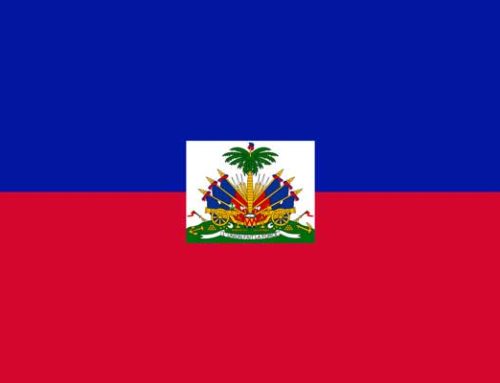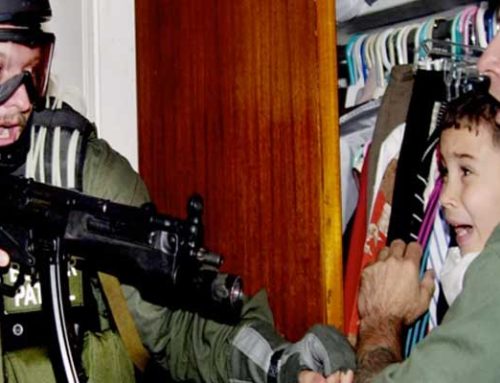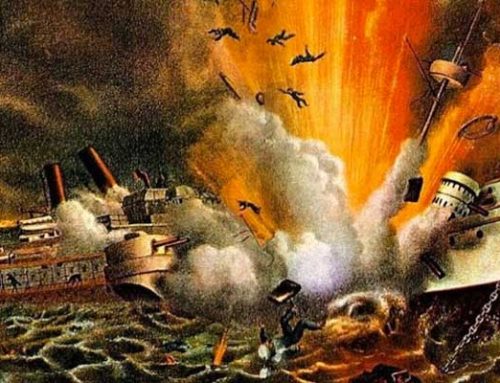On July 26, 1953, a revolt against Cuban dictator Fulgencio Batista broke out as about 130 young men attacked an army barracks. The leader of the revolt was a twenty-six-year-old lawyer named Fidel Castro. The uprising was a failure. Some of the attackers were massacred, others were jailed. Castro escaped to the mountains but was captured and sentenced to fifteen years. Batista later pardoned Castro, which was a mistake that would end his dictatorship.
Castro attacked again in 1956, this time with the support of many Cuban people. Castro promised he would replace Batista’s dictatorship with free elections. He also promised to end government corruption. During Batista’s regime, many American criminals were involved in Cuba’s thriving tourist industry. Bribes were a standard way of doing business in that era. Cuban business leaders, landowners, and Roman Catholic bishops persuaded the United States to withdraw its support from Batista and end arms sales to Cuba. On January 1, 1959, Batista and his family fled to Florida, taking a substantial portion of the Cuban treasury.
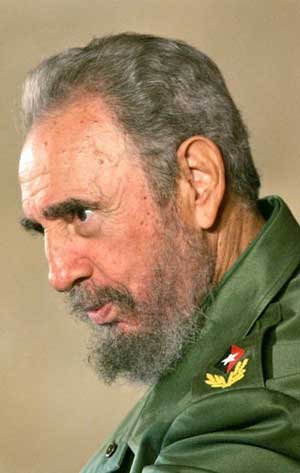
Fidel_Castro
Fidel Castro (1926-2016) was the leader of the Cuban government from 1959 to 2011.
Castro’s government initially had the backing of most of the Cuban people, but some of his supporters grew alienated. Castro seized agricultural estates, factories, and utilities. It soon became apparent that Castro was setting up a one-party Communist government. From 1945 to 1990, the United States and the Soviet Union were the world’s two most powerful military powers. Each fought for control of the world’s developing nations in what was known as the Cold War. Shortly after Castro took power, Cuba severed its ties to the United States and formed a close relationship with the Soviet Union.
Many Cubans left the island to resettle in the United States, primarily in South Florida. The Cuban exiles sought American support in overthrowing Castro’s dictatorship. The Americans helped organize and finance an invasion of Cuba by about 1500 exiles. The exiles landed at the Bay of Pigs, on Cuba’s southeastern coast, in 1961 but were soundly defeated.
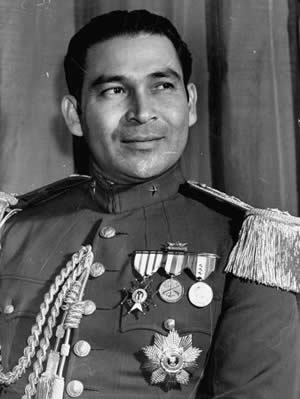
Fulgencio_Batista
Fulgencio Batista y Zaldívar (1901 - 1973) was dictator of Cuba until he was overthrown in a 1959 revolution.
The following year, American spy planes discovered the Soviet government was building launching pads for nuclear missiles in Cuba. If the Soviets completed their project, nuclear missiles would be pointed at America from fewer than one hundred miles away. President John Kennedy threatened to invade Cuba, and the world came close to nuclear war. Soviet Premier Nikita Khrushchev agreed to remove the missiles when the United States promised not to invade Cuba.
In 1980, following a downturn in the Cuban economy, thousands of Cuban citizens begged for a way to leave the country. Castro announced that any Cuban who wanted to leave was welcome to go. American President Jimmy Carter agreed to accept the people who wanted to leave Cuba. Castro opened the port of Mariel to anyone who wanted to leave, but he was surprised and embarrassed by the number of people who accepted his offer.
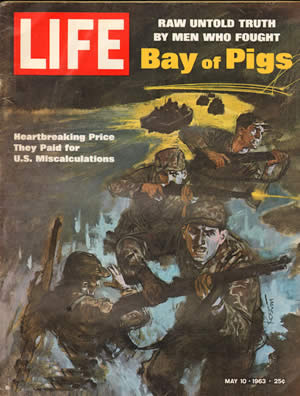
Bay_of_Pigs
Life Magazine article on the Bay of Pigs invasion.
In 1980, following a downturn in the Cuban economy, thousands of Cuban citizens begged for a way to leave the country. Castro announced that any Cuban who wanted to leave was welcome to go. American President Jimmy Carter agreed to accept the people who wanted to leave Cuba. Castro opened the port of Mariel to anyone who wanted to leave, but he was surprised and embarrassed by the number of people who accepted his offer.
Castro saw an opportunity. Castro emptied his prisons and discharged some of the sickest people from his hospitals. He consented to allow citizens to leave Mariel but insisted the Americans also had to take the people Castro wanted to exile. America had to choose between turning away Cubans wanting to leave and accepting the people Castro did not want. America chose the second course as more than 125,000 Cubans left from Mariel. Castro stopped the departure after six months, but families continued to attempt to leave. They often resorted to any boat or raft that could get them to the United States. Many perished at sea.
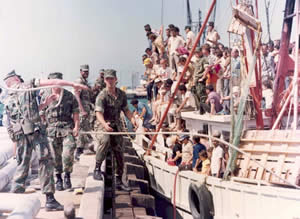
Marial-boatlift
More than 125,000 Cubans crowded into boats to make the journey to America in 1980.
Castro resigned from office in 2011 and died six years later. 2015 the United States and Cuba restored diplomatic relations, though a trade embargo is still in place. In March 2016, Barack Obama became the first American President to visit the island nation in 80 years.
Resources:
Download this lesson as Microsoft Word file or as an Adobe Acrobat file.
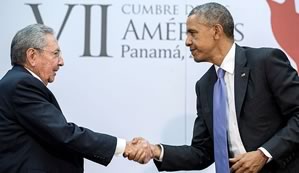
Obama_Castro
President Obama shakes hands with Cuban President Raul Castro in 1914. Raul and Fidel were borthers.


